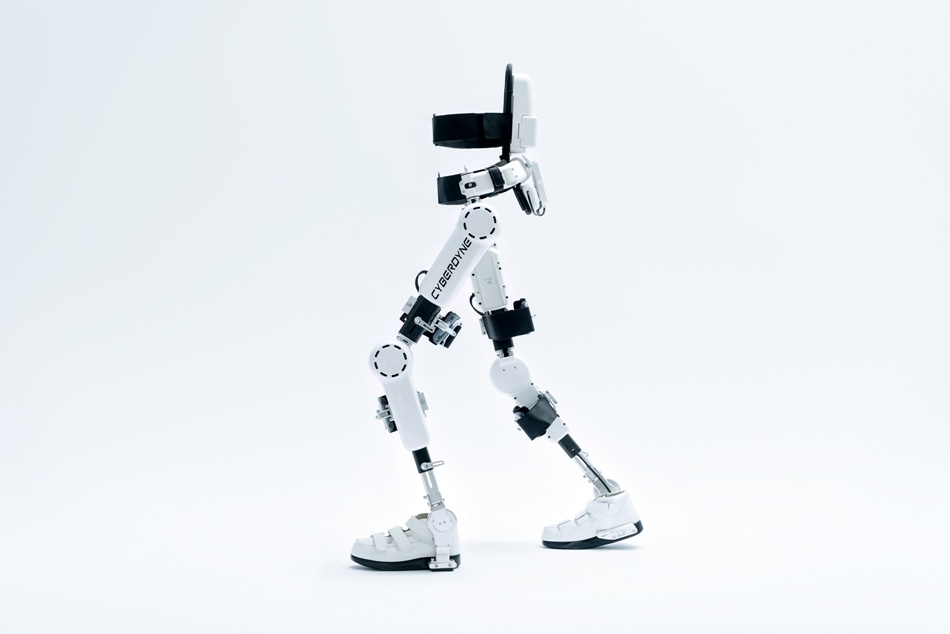Mar 7 2018
Brooks Rehabilitation, an industry leader in post-acute physical rehabilitation, announced on March 5, 2018, its collaboration with Japanese medical and social innovation company, CYBERDYNE, INC., to launch and make available the world’s first advanced robotic treatment device that has been demonstrated to enhance a patient’s ability to walk.
 Photo of Medical Hybrid Assistive Limb (HAL) courtesy of Prof. Sankai, University of Tsukuba/CYBERDYNE, Inc. Individuals with spinal cord injury can now receive treatment with Medical HAL at the Brooks Cybernic Treatment Center in Jacksonville, FL. (Image credit: Brooks Rehabilitation)
Photo of Medical Hybrid Assistive Limb (HAL) courtesy of Prof. Sankai, University of Tsukuba/CYBERDYNE, Inc. Individuals with spinal cord injury can now receive treatment with Medical HAL at the Brooks Cybernic Treatment Center in Jacksonville, FL. (Image credit: Brooks Rehabilitation)
Individuals with spinal cord injuries can at present access FDA-cleared HAL, which is short for Hybrid Assistive Limb, at the Brooks Cybernic* Treatment Center in Jacksonville, FL. The Treatment Center is presently the only facility in the U.S. offering this advanced treatment.
“We’ve already seen the results of improved mobility and ability to walk in patients with spinal cord injury (SCI) at several international locations that are providing this technology,” said Dr. Geneva Tonuzi, Medical Director of the Brooks Cybernic Treatment Center. “We are thrilled to finally have this unique technology available here at Brooks Rehabilitation as it opens the door to more research and treatment methods in advancing spinal cord injury treatment.”
Recently executed in Japan, Germany, and other countries, HAL fits the patient’s lower limbs and trunk and works using internal signals from the body. This powered lower extremity exoskeleton is novel unlike any other exoskeleton treatment currently available because the device’s movements are neurologically-controlled by the patient’s choice, and use of its secondary Biofeedback Device features permits the patient to see and alter the signals they are producing. This functional integration of human neural pathways with advanced technology is a landmark development for SCI patients in the U.S.
How It Works:
Sensors are attached to the lower extremities of a patient.
When the patient plans to move, muscles receive nerve signals from the brain, and faint bio-electrical signals are sensed on the skin’s surface.
HAL uses sensors to detect these signals and assists with preferred movements, while also improving stability and strength.
Active usage of neural pathways for voluntary movement with physical feedback to the brain results in a better ability for the patient to walk independently.
The revelation and innovation of Cyberdyne, Inc., and HAL is that of Dr. Yoshiyuki Sankai, President, and CEO of Cyberdyne, Inc., and Professor at the University of Tsukuba, Japan.
“Wearing HAL leads to a fusion of human, robot, and information systems,” said Dr. Sankai. “I’m pleased that Cybernic Technology will now benefit patients in the U.S., helping to improve their walking ability as well as gain other functional and physiological benefits.”
Patients who take part in HAL treatments at the Brooks Cybernic Treatment Center can also choose to share their treatment data for clinical research trials that further assess the advantages of HAL interventions and future enhancement opportunities.
Reference:
* “Cybernics” (adjective: Cybernic) is a new academic field that is centered around cybernetics, mechatronics and informatics fused/combined with various other fields including brain/neuroscience, robotics, biology, behavioral science, psychology, law, ethics, and business administration. Cybernics is championed by Yoshiyuki Sankai, a professor at the University of Tsukuba in Japan.